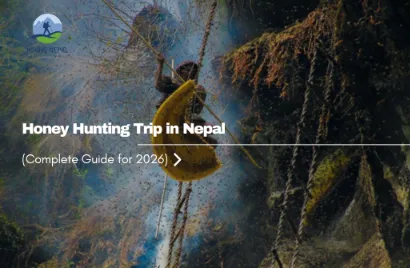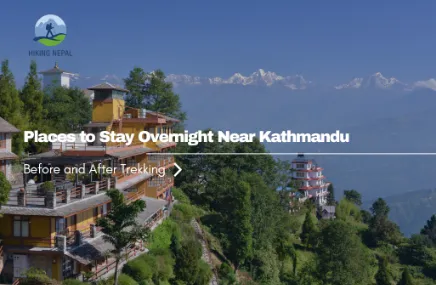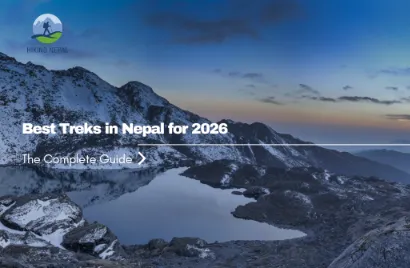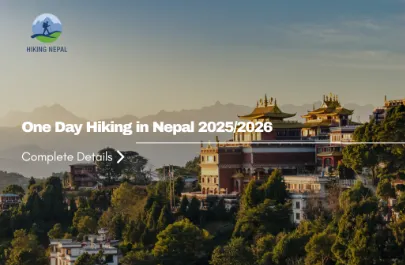The Manaslu Circuit Trek is a hidden gem in the Himalayas, offering trekkers a unique blend of natural beauty, rich culture, and challenging adventures. Located in the west-central part of Nepal, this trek takes you around the majestic Mount Manaslu, the eighth-highest mountain in the world, standing tall at 8,163 meters. If you're considering this trek, here's everything you need to know to prepare for an unforgettable experience journey.
Why Choose the Manaslu Circuit Trek?
Unlike the more popular trekking routes such as Everest Base Camp or the Annapurna Circuit, the Manaslu Circuit Trek is less crowded, providing a more serene and authentic experience. The trek is renowned for its stunning landscapes, ranging from lush subtropical forests to stark alpine terrains, as well as its diverse cultural encounters with Tibetan-influenced communities.
Best Time to Trek
The ideal seasons for the Manaslu Circuit Trek are spring (March to May) and autumn (September to November). During these periods, the weather is generally stable, and the views of the snow-capped peaks are spectacular. Winter trekking is possible but can be challenging due to heavy snowfall and cold temperatures, especially at higher elevation altitudes.
Permits Required
Trekking in the Manaslu region requires several permits:
- Manaslu Restricted Area Permit (RAP): As the area is a restricted zone, trekkers need a special permit. The cost varies depending on the season.
- Manaslu Conservation Area Permit (MCAP): This permit supports conservation efforts in the region.
- Annapurna Conservation Area Permit (ACAP): If your trek continues into the Annapurna region, this permit is necessary.
All permits must be obtained through a registered trekking agency, and you must be accompanied by a licensed guide.
Trekking Route and Itinerary
The classic Manaslu Circuit Trek usually takes around 14-18 days, starting from Soti Khola and ending in Beshi Sahar or Dharapani. Here is a sample itinerary:
Day 1: Drive from Kathmandu to Soti Khola
Day 2: Trek to Machha Khola
Day 3: Trek to Jagat
Day 4: Trek to Deng
Day 5: Trek to Namrung
Day 6: Trek to Samagaon
Day 7: Acclimatization day at Samagaon
Day 8: Trek to Samdo
Day 9: Trek to Dharmashala
Day 10: Cross Larkya La Pass (5,160m) and trek to Bimthang
Day 11: Trek to Tilije
Day 12: Trek to Dharapani
Day 13: Drive back to Kathmandu

Physical Fitness and Preparation
The Manaslu Circuit Trek is a strenuous journey, requiring a good level of physical fitness. Trekkers should be prepared for long days of walking, sometimes up to 6-8 hours, with significant altitude gains. Prior trekking experience is beneficial, but not essential if you commit to proper preparation and acclimatization.
Accommodation and Food
Tea houses provide basic accommodation along the trek. While the facilities are simple, they are comfortable enough to rest after a day's trek. Meals typically consist of local Nepalese dishes like dal bhat (lentil soup with rice) and international options such as pasta and noodles. Ensure you carry some energy bars or snacks for the trail.
Packing Essentials
Packing the right gear is crucial for a successful trek. Essential items include:
- Trekking boots
- Warm clothing (layers)
- Sleeping bag
- Trekking poles
- First aid kit
- Water purification tablets
- Sunscreen and sunglasses
- High-energy snacks
Challenges and Safety
The Manaslu Circuit Trek involves high-altitude trekking, with the highest point being Larkya La Pass at 5,160 meters. Altitude sickness is a genuine concern; hence, gradual acclimatization and staying hydrated are critical. Always trek with a licensed guide who can assist in emergencies.
Cultural Insights
One of the highlights of the Manaslu Circuit Trek is the chance to immerse yourself in the local culture. The region is home to several ethnic groups, including the Gurung and Tibetan communities. Visiting monasteries, chortens, and prayer wheels along the way offers a glimpse into the spiritual lives of the locals.
Final Thoughts
The Manaslu Circuit Trek is the adventure of a lifetime, offering a perfect mix of natural beauty, cultural richness, and physical challenge. With proper preparation, the right gear, and a spirit of adventure, you'll be rewarded with memories that last a lifetime. Ready to explore? Let Hiking Nepal take you there.







